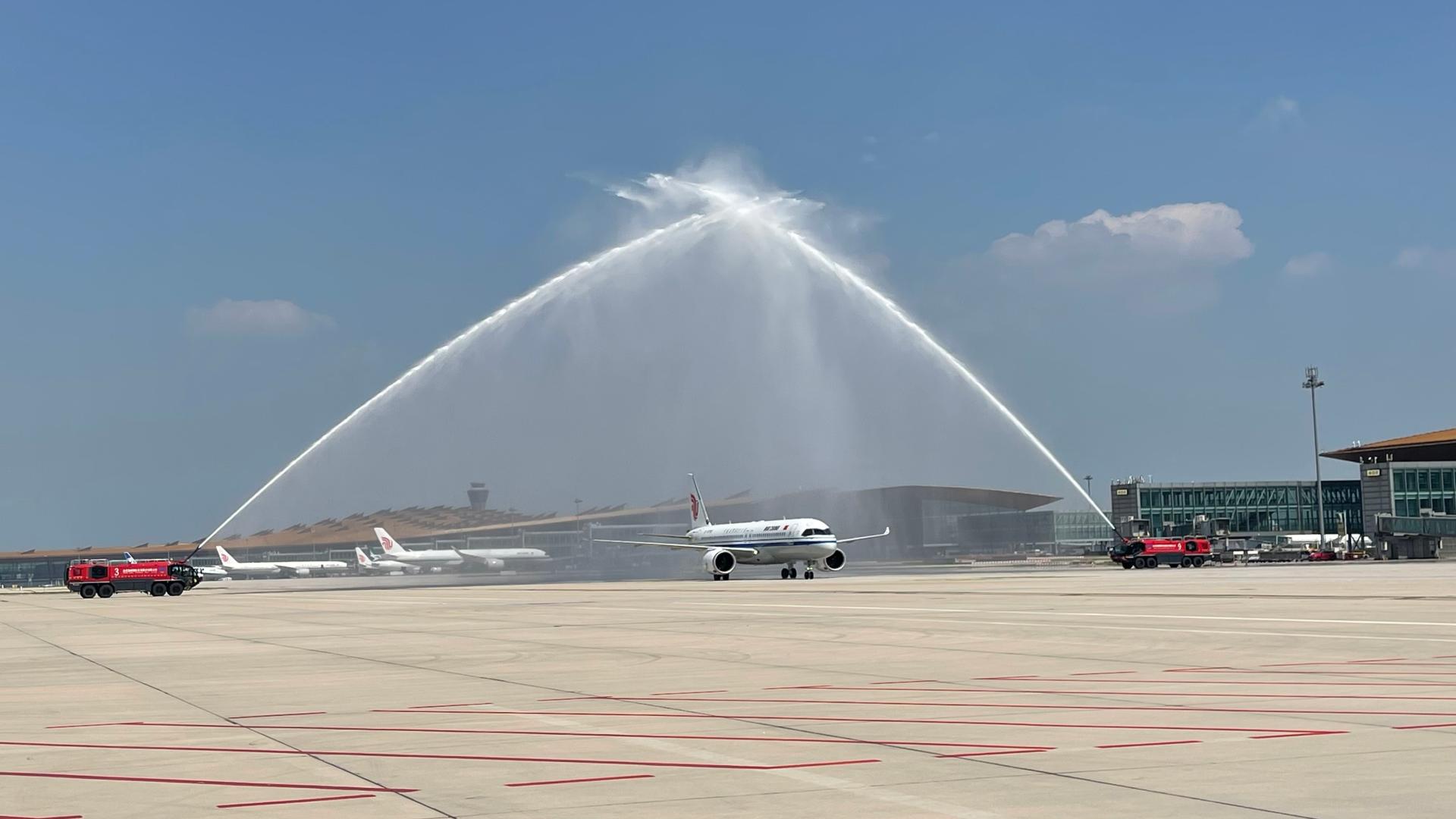As Orders Accumulate, What Is the Future for China's C919?
What lies ahead for China's C919 amidst a surge in orders?

On the evening of August 28, two C919s adorned with the liveries of Air China and China Southern Airlines were showcased at the final assembly and manufacturing center of the Commercial Aircraft Corporation of China (COMAC) in Pudong, Shanghai. These deliveries mark the eighth and ninth C919 aircraft handed over to Chinese airlines.
"This time, the deliveries to multiple users mean COMAC starts mass delivery to different customers," noted civil aviation expert Lin Zhijie.
Lin mentioned to CN that the fact that the aircraft will operate with various airlines under diverse conditions represents a "very important stage for the C919's commercial operation."
COMAC's C919 received certification from Chinese civil aviation authorities in 2022. Since then, seven aircraft have been delivered to its inaugural global operator, China Eastern Airlines, which began its maiden commercial operations in May 2023.
China Eastern Airlines has introduced five commercial routes featuring the C919, linking Shanghai with cities like Beijing, Chengdu, and Xi'an. On September 1, the jetliner celebrated its 500,000th passenger on a flight from Chengdu Tianfu International Airport to Shanghai Hongqiao International Airport. The C919 fleet of China Eastern has recorded over 10,000 hours of safe flight and completed more than 3,700 commercial flights.
**Challenges in Scaling Production for COMAC**
Globally, the C919 has amassed over 1,000 orders, with China’s three major airlines each placing orders for 100 jets.
For China Eastern, the agreement includes a promise of five aircraft deliveries in 2024, 10 annually from 2025 to 2027, 15 each year from 2028 to 2030, and 20 in 2031. The other orders from Air China and China Southern Airlines are also set to be delivered over the same period from 2024 to 2031. Notably, Air China has opted for the Extended Range version, distinguishing it from the other two airlines.
With a full-load flight range of 2,000 nautical miles, an increase of 700 nautical miles from the basic model, and a maximum flight duration of five hours, an increase of 1.7 hours, the C919 ER variant showcases improved capabilities for longer flights and enhanced fuel efficiency.
This indicates Air China's future plans to utilize the C919 on longer routes.
Beyond the major airlines, Urumqi Air and Suparna Airlines, both part of the HNA Group, have each ordered 30 aircraft, while Tibet Airlines has secured 40 high-altitude C919s. Several aircraft leasing firms have also signed purchase agreements, leading COMAC’s total order volume to exceed 1,000 and expected to surpass 1,200.
The dual delivery in August is seen as a demonstration of COMAC's confidence in progressing from small-scale to mass production.
Qiao Shanxun, a member of the Chinese Society of Aeronautics and Astronautics, characterized large aircraft production as consisting of three stages, starting with a small initial step to validate design and production processes. "Then is scale production, which means the manufacturer will gradually expand its production to meet the market needs," he commented.
Qiao believes that COMAC is presently transitioning from small-scale production to mass production.
"The third stage is a mature, stable production stage. In this stage, the quality of the production is stable and production capacity will reach a peak," he elaborated.
As per data shared during COMAC's suppliers conference in March, the C919 is anticipated to deliver 30 aircraft in 2024, 54 in 2025, 84 in 2026, 110 in 2027, and 126 in 2028.
Recent reports from the financial outlet 'Science and Technology Innovation Board Daily' have confirmed that the location for the C919's second final assembly plant will be in the Lin-gang Special Area in Pudong, Shanghai, covering approximately 330,000 square meters. The new facility is set to fulfill future mass production requirements for the C919 and is projected to be fully operational by 2027, with a target production exceeding 150 aircraft annually.
**From China to the Global Market**
While the domestic market for the C919 is well-established, the path toward international certification remains rigorous.
A report by the South China Morning Post indicated that the European Union Aviation Safety Agency and the Civil Aviation Administration of China have been engaged in multiple discussions this year regarding the procurement of EU flight certificates for the C919. In July, the European authority even conducted an on-site inspection of the aircraft in Shanghai.
Additionally, China and the EU have forged an agreement on civil aviation safety and an aviation partnership to bolster cooperation, all seen as promising developments for the C919's prospects in the European market.
"Indeed, acquiring the major international organization's airworthiness certificate would definitely help the aircraft enter the global market. But it’s not a sine qua non, as the aircraft can also be operated in other countries if they have bilateral civil aviation agreements with China," Lin added.
**Why Has China Pushed for C919 Production?**
Boeing's 2024 Commercial Market Outlook for China, released in July, forecasts that the country's commercial fleet will expand by over 4 percent annually, growing from the current 4,345 to 9,740 by 2043. Furthermore, annual passenger traffic is predicted to rise by 5.9 percent, solidifying China's position as the world's largest market in terms of traffic.
Manufacturing passenger aircraft domestically is believed to cater to both national and international demands.
"We are the largest civil aviation market in the world. Thus, every year we would spend a large amount of foreign exchange on importing aircraft," Lin explained.
However, achieving profitability for a passenger jet manufacturer takes time. The successful deliveries and safe operation of the C919 thus far provide a viable alternative for global airlines.
"This would help to boost the development of the global civil aviation industry," Lin concluded.
Ultimately, the manufacturing of the C919 is also seen as a crucial step in advancing the growth of China's high-end manufacturing sector.
Olivia Brown contributed to this report for TROIB News
Discover more Science and Technology news updates in TROIB Sci-Tech












